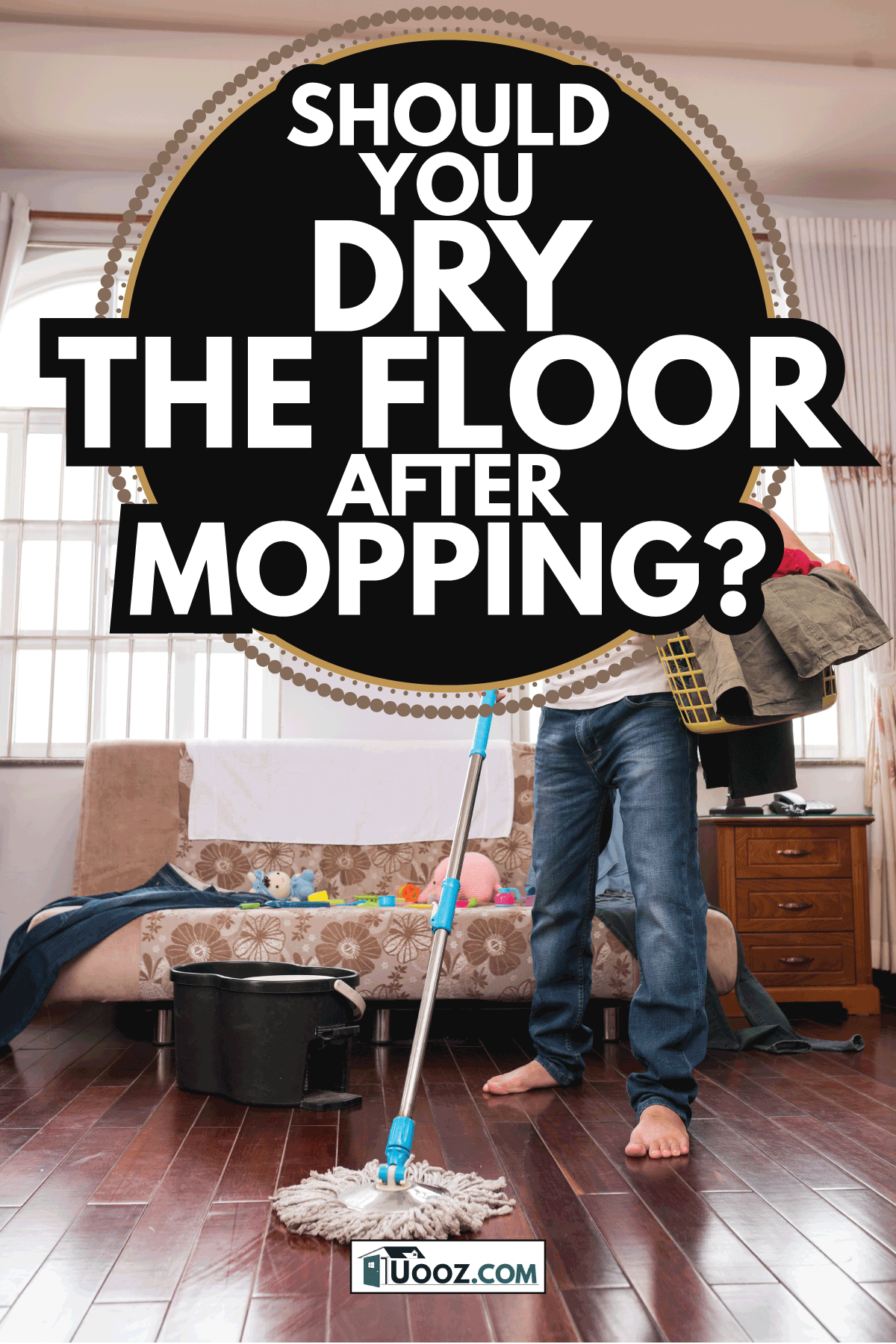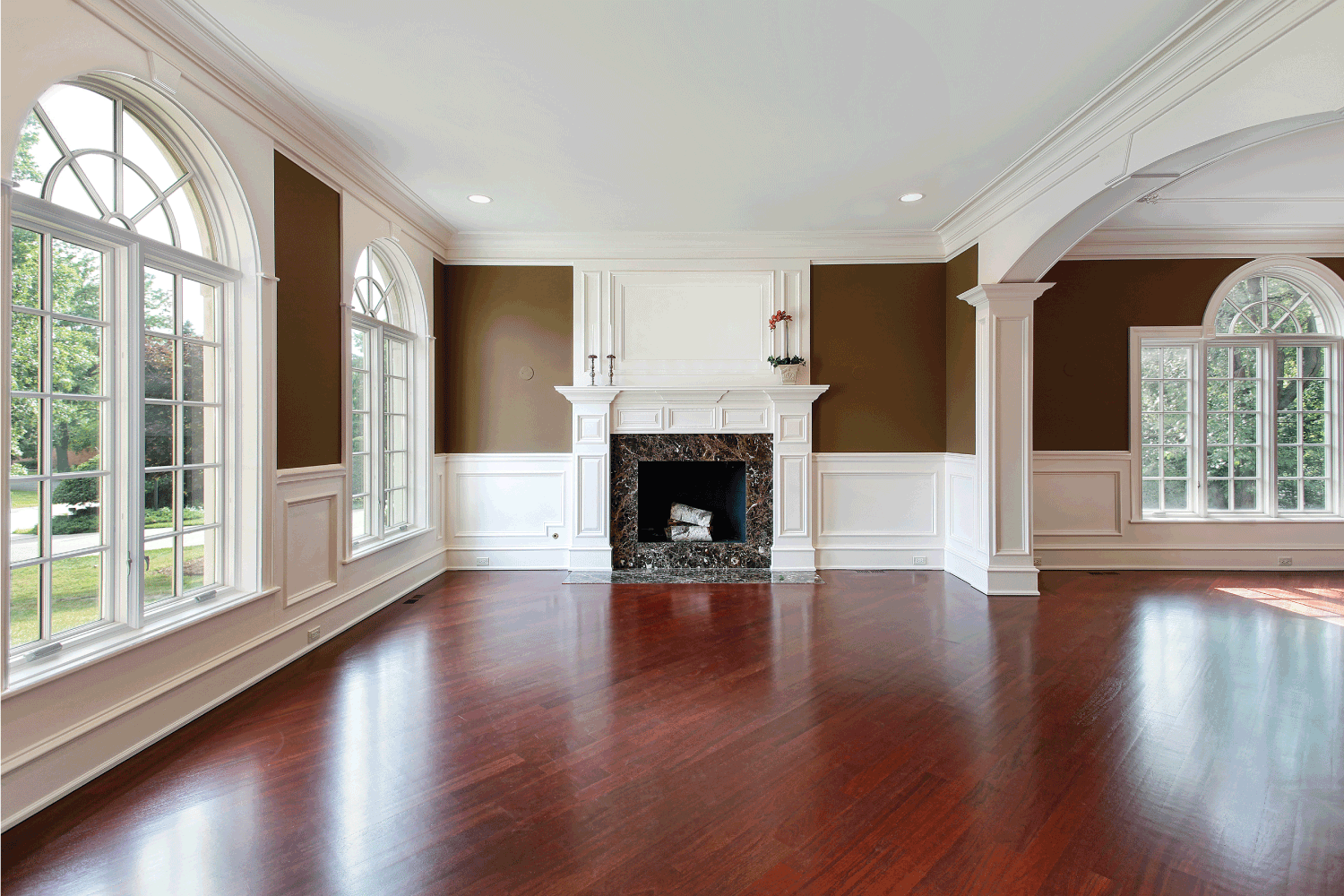Whether you have a hardwood floor that is brand new or one that is over ten years old, you're always looking to protect your investment. Water can be one of the most dangerous things to a hardwood floor, but it's necessary to mop the floor and keep it clean. But should you dry the floor after mopping it? We have looked into this question, and in this post, we will answer it for you.
Many flooring contractors and experts may advise that it is best to dry the floor after mopping it. Whether you do this manually or use another method, you should always look to keep the floors as dry as possible. This is particularly true for hardwood floors that are older or have a sealant that needs to be re-applied.
Hardwood floors can take more effort to preserve than other types of flooring. This is due to their porous nature (even ones that are pre-treated) and their tendency to contract and expand when exposed to water and humidity. It's always best to minimize the amount of water you place on the hardwood floors when mopping them. Continue reading to learn more about the best practices to use when mopping hardwood floors.

Mopping and Drying Hardwood Floors
You may have heard many homeowners referred to water as being a hardwood floor's worst enemy, and there is a lot of truth to this. Whether it's due to rain leaking on the inside of your home or the application of excessive water on the floor during its cleaning, the floors can be at risk of becoming warped or permanently damaged if exposed to these conditions for too long.

This doesn't mean that any exposure to water will damage the floors; however, repeated and extended exposure may. It's for this reason that care should be taken when mopping the floor. Not only should you avoid placing too much water on the floor when mopping them, but it's also recommended that you dry the floors as quickly as possible.
This is the case for older, damaged floors or areas where sealant or polyurethane has begun to peel off the floor. These exposed areas are particularly susceptible to water damage. You may also find that wood that is exposed to too much water can begin to develop mold.
If the wood is untreated and exposed to much moisture, mold may begin to accumulate on top of the wood surface, eventually affecting your home's air quality. Once the mold sets in, it can become pretty tricky to remove-especially if it's in between the hardwood planks.
How to dry a floor after mopping?
There are a couple of ways that you can dry your hardwood floors after mopping them. Let's look at the most popular ones.
Use a squeegee mop
After applying the cleaning solution to the floor removing it, take a squeegee mop and go over your hardwood floors. Be sure to squeeze out any excess water once the mob becomes soaked. You can be a squeegee mop for about $20 online or at your local hardware store. Be sure to wring the mop out thoroughly when hanging it up in a room that contains hardwood flooring.
Check out this squeegee mop on Amazon.
Use an absorbent cloth or towel
You can also use a thick cloth to remove any excess water from your floor. To do this, attach the cloth or towel to your mop utilizing a piece of rope or a long rubber band. Or, if you are working in a small room, you can use your feet to maneuver the cloth around the floor.
When using this method, be sure to start as far away from the room entrance as fast as possible and work your way back to avoid re-wetting the floors with your footprints.
When the cloth can no longer absorb water, hold it over the sink and squeeze it on both sides to wring it out. Continue this process until the floors are dry. You can also use an additional cloth or two to help speed things up.
How often should I mop the floor?
Most home experts recommend mopping at least once a week after first sweeping the rooms. The frequency at which you should mop your floor depends on a few different factors.
The most crucial factor is the amount of traffic that the rooms in your home receive. The high traffic areas typically include the foyer, entrance areas, exits near the kitchen, and hallways leading to the bedrooms.
It also depends on the number of people live in your home and whether or not you have children and pets. If you have a high-traffic home in general, you may find that you'll need to mop two or more times a week--particularly in high traffic areas.
Can mopping damage my hardwood floors?
Certain conditions can lead to your hardwood floors becoming damaged from mopping. These conditions include mopping floors that have not been sealed with lacquer or polyurethane.
Placing too much water on the floor when mopping and letting the floor air dry instead of removing the water can also be damaging. You can also cause damage to your floors by mopping them with steam cleaning mops. These devices are meant to be used on vinyl, laminate, and stone surfaces, not hardwood floors.
Can mopping damage my cork floors?
Yes, mopping can damage cork floors. Keep in mind that cork floors are naturally water-resistant. However, cork needs to be sealed to be completely waterproof as a flooring material. Cork is usually coated with polyurethane. This finish is typically applied to cork flooring every 3 to 4 years to help it stay impervious to water damage and warping.
Like how unsealed hardwood floors can absorb water, cork floors can do the same if left unsealed and exposed too often to excessive moisture. Like hardwood floors, cork is a very durable material and needs periodic cleaning and sealing.
How long does a floor take to dry after mopping?
It typically depends on the size and temperature in the room, but a floor can take anywhere from 30 minutes to an hour to dry. This also depends on how much water was left on the floor during the cleaning session and the temperature in the room.
How can I make my floor dry faster?
There are a few different ways than you can help your floor dry faster. Let's look at the easiest ways to do it.
Open room windows and nearby doors
If the weather outside is above 72 degrees, you can open the windows to the room to help dry the floors faster. The fresh warm air coming through the window will provide ventilation and airflow so that the water can evaporate quickly from the floors into the air.
Turn On Your A/C
This may sound counterproductive, but you can also turn on your air conditioning to help dry the floors faster. When you turn on the air conditioner in a home, it works as a natural dehumidifier sucking away all my shirt from the air. This will, in turn, help the floors to dry faster. Be sure not to set the temperature too low, as this can increase the floor's drying time. Consider setting it anywhere from 1 to 3 degrees below the current temperature in the home.
Add an oscillating fan
Another quick and easy way to help the floors dry faster is to add an oscillating fan to the room. You can purchase one of these fans at your local hardware store or online. Place the fan in the room and set it to rotate to cover the entire floor. This can cut anywhere from 5 to 20 minutes off of the floor's drying time.
Check out this oscillating fan on Amazon.
Use a dehumidifier
If you prefer not to turn on the AC, you can also add a dehumidifier to the room. Keep in mind that the dehumidifier will need to be on the larger side to make it worth the effort. This means that you'll need at least one 50-pint dehumidifier to lower the humidity level in the room quickly.
Natural methods such as silica gel, cat litter, and charcoal won't suffice for this task, as the floor will dry out faster than they'd be able to remove the humidity from the room. For this method, place the dehumidifier in the room and let it run until the floor is dry.
Wrapping Things Up
We hope this post has helped you understand how drying a hardwood floor after it's been mopped can be beneficial to helping preserve the floors. Remember, even if hardwood floors are sealed, it's best to keep them as dry as possible.
Before you go, be sure to check out our other posts:


